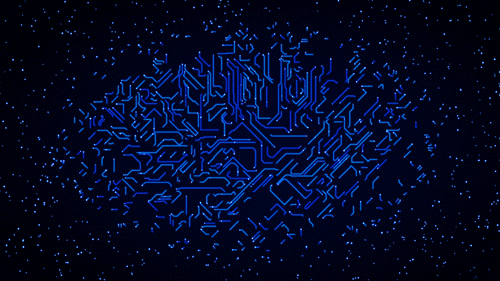An Interest In:
Web News this Week
- April 28, 2024
- April 27, 2024
- April 26, 2024
- April 25, 2024
- April 24, 2024
- April 23, 2024
- April 22, 2024
From Centralized Chaos to Decentralized Harmony: The Power of Web3
The internet has totally changed how we communicate, work, and live, but now we've got some issues with big tech companies controlling most of the data and services we use online. Luckily, a new type of internet called Web3 is coming to the rescue, aiming to create a more fair, secure, and open infrastructure. In this article, we'll check out what makes Web3 so cool, how it could shake up different industries, and what challenges it needs to overcome to get more popular.
Introduction to Web3 and its significance in the digital world
What is Web3?
Web3 is the third generation of the internet, with the goal of creating a more secure, transparent, and democratic online infrastructure. Web3 is constructed on a decentralized architecture driven by blockchain technology, making it more robust to assaults and censorship than traditional web architecture, which is controlled by a few of centralized institutions.
Why is Web3 Important?
Web3 is significant because it has the potential to transform the way we engage with one another and with the world around us. It empowers users to take ownership of their data, identities, and assets, letting them to deal directly with one another without the use of middlemen. This results in a more open and transparent digital economy, allowing for the development of previously unimaginable business models and prospects.
Centralized chaos: the limitations of traditional internet infrastructure
Centralized Architecture and its Limitations
A centralized architecture is a web infrastructure in which all data and content is kept on centralized servers that are controlled by a few dominating businesses. As a result, there is just one point of failure, making it subject to hackers, data breaches, and censorship. It also grants these centralized companies a disproportionate amount of power and influence over consumers' data, privacy, and online conduct.
Issues Arising from Centralization
Centralization causes a multitude of problems, including a loss of privacy, security, and transparency. It also hinders the flow of knowledge and innovation. Monopolistic techniques are frequently used by centralized institutions to limit competition and stifle progress.
Understanding Decentralized networks and their benefits
Decentralized Architecture and its Advantages
A decentralized web infrastructure is one in which data and content are kept on a dispersed network of computers rather than on centralized servers. This results in a more robust system that is less vulnerable to hacking, data breaches, and censorship. Users can also maintain control over their data, privacy, and online activity.
Benefits of Decentralization
Decentralization fosters a more open, transparent, and democratic digital economy, allowing for the development of new business models and possibilities. It encourages competition, innovation, and interoperability by letting users to deal directly with one another without the need of middlemen. As a consequence, prices are reduced, transactions are completed faster, and users have more control.
Web3 applications and their impact on industries
Overview of Web3 Applications
Web3 apps, as opposed to centralized servers, are decentralized applications that run on a dispersed network of computers. They let users to transact directly with one another while maintaining control over their data, identity, and assets. Web3 applications have the potential to disrupt a wide range of industries, including banking, healthcare, education, and energy.
Industry-specific Use Cases
Web3 applications in finance enable decentralized finance (DeFi), which allows users to deal directly with one another without the use of financial middlemen. Web3 apps in healthcare enable patients to take control of their medical records while maintaining their privacy. Web3 apps are enabling the development of decentralized learning systems that are more accessible and inexpensive in education. Web3 applications are facilitating the development of more efficient and sustainable decentralized energy markets in the energy sector.
The future of Web3: Opportunities and challenges
Web3 is at the vanguard of the world's transition to a more decentralized future. Web3 adoption has the potential to produce a more equitable and transparent internet, but it is not without problems.
Potential of Web3 in the Future
Web3 has the ability to completely transform the internet as we know it. Web3's ability to construct decentralized apps (dApps) eliminates the need for middlemen and returns power to the users. This technology allows peer-to-peer networks, giving users immediate access to data ownership and security.
Web3 has the potential to establish a new economy based on trust and openness. Smart contracts and blockchain technology can enable more efficient, cost-effective, and fair forms of business.
Challenges Facing Web3 Adoption
Despite Web3's exciting promise, there are considerable hurdles that must be overcome before it can be widely used. The technology is still in its infancy and requires further development before it can be considered user-friendly and accessible. There is also a need for increased public education on the benefits and practical applications of Web3.
Furthermore, regulatory frameworks and legal structures for Web3 are currently being developed. Because of the decentralized structure of Web3, existing regulatory organizations have new hurdles, and it will take time to develop a framework that protects consumers while enabling innovation to flourish.
Decentralized finance (DeFi) and its role in Web3
Introduction to DeFi
Decentralized finance, often known as DeFi, is a type of financial application that runs on a blockchain. These applications offer financial services without the need of traditional middlemen such as banks. DeFi, on the other hand, employs smart contracts to automate financial transactions and give customers more control over their assets.
DeFi and its impact on Financial Services
DeFi has the ability to disrupt traditional financial services by making them more accessible and transparent. Anyone with an internet connection may use DeFi to obtain financial services without going via traditional middlemen or experiencing the same entrance obstacles.
DeFi, by functioning on a transparent blockchain, has the ability to minimize fraud and corruption in financial transactions. The backbone of DeFi, smart contracts, ensure that transactions are handled as intended automatically, eliminating the need for middlemen or attorneys to monitor the process.
The role of blockchain in Web3 and its potential for disruption
The Significance of Blockchain in Web3
Blockchain is a tamper-proof, decentralized ledger that records transactions. It is the foundation of Web3, and its importance stems from its capacity to create trust, offer security, and eliminate the need for intermediaries.
Blockchain technology can assist to promote trust and security on a decentralized Web3 by providing a visible and immutable record of transactions. This opens up new possibilities for businesses ranging from banking and healthcare to supply chain management and voting systems.
Applications of Blockchain in Web3
Blockchain technology may be used in a variety of Web3 applications to improve transparency, security, and accessibility. It may be used for a variety of purposes, including identity management, digital voting, supply chain management, decentralized markets, and much more. The potential for blockchain technology in Web3 is enormous, and innovation in this area will continue to advance the internet's decentralization.
Conclusion: The power of Web3 in shaping the future of the internet
The Future of Web3
Web3 has enormous promise, and its future looks promising. As more people become aware of Web3's capabilities, there will be a greater demand for decentralized apps and services. The internet will become more fair, transparent, and equal as technology advances.
The Impact of Web3 on the Internet
Web3 has the potential to totally change how we use the internet. It can get rid of the middlemen and give users control, making peer-to-peer networks and a new trust-based economy possible. The best part about Web3 is that it puts users first, making the internet more inclusive and fair for everyone. Basically, Web3 is a big deal because it changes how we think about the internet and what it can do. It's decentralized, which means it can make the digital world more democratic, safe, and transparent. But, there are still challenges to getting people to use it, and there's a lot more to discover about what it can do. As technology gets better, we can expect to see even more cool stuff from Web3 that will change how we live and work online.
Frequently Asked Questions (FAQ)
What is Web3?
Web3 is the next generation of internet infrastructure that aspires to provide a more democratic, safe, and transparent decentralized architecture.
What are the benefits of Web3?
Web3 offers several benefits, including greater privacy, more transparency, and more control over our digital lives. It creates a more democratic and open internet that is not controlled by a few big tech companies.
What are the challenges facing Web3 adoption?
Web3 has various advantages, including more privacy, transparency, and control over our digital lives. It fosters a more democratic and open internet that is not dominated by a few large tech corporations.
What is the role of blockchain in Web3?
Blockchain technology is an essential component of Web3, serving as the foundation for decentralized networks and enabling the development of trustless services. It enables safe and transparent transactions without the use of middlemen.
Thank you for reading!
Soumyadeep Mandal @imsampro
Original Link: https://dev.to/imsampro/from-centralized-chaos-to-decentralized-harmony-the-power-of-web3-4jbh
Dev To
 An online community for sharing and discovering great ideas, having debates, and making friends
An online community for sharing and discovering great ideas, having debates, and making friendsMore About this Source Visit Dev To









